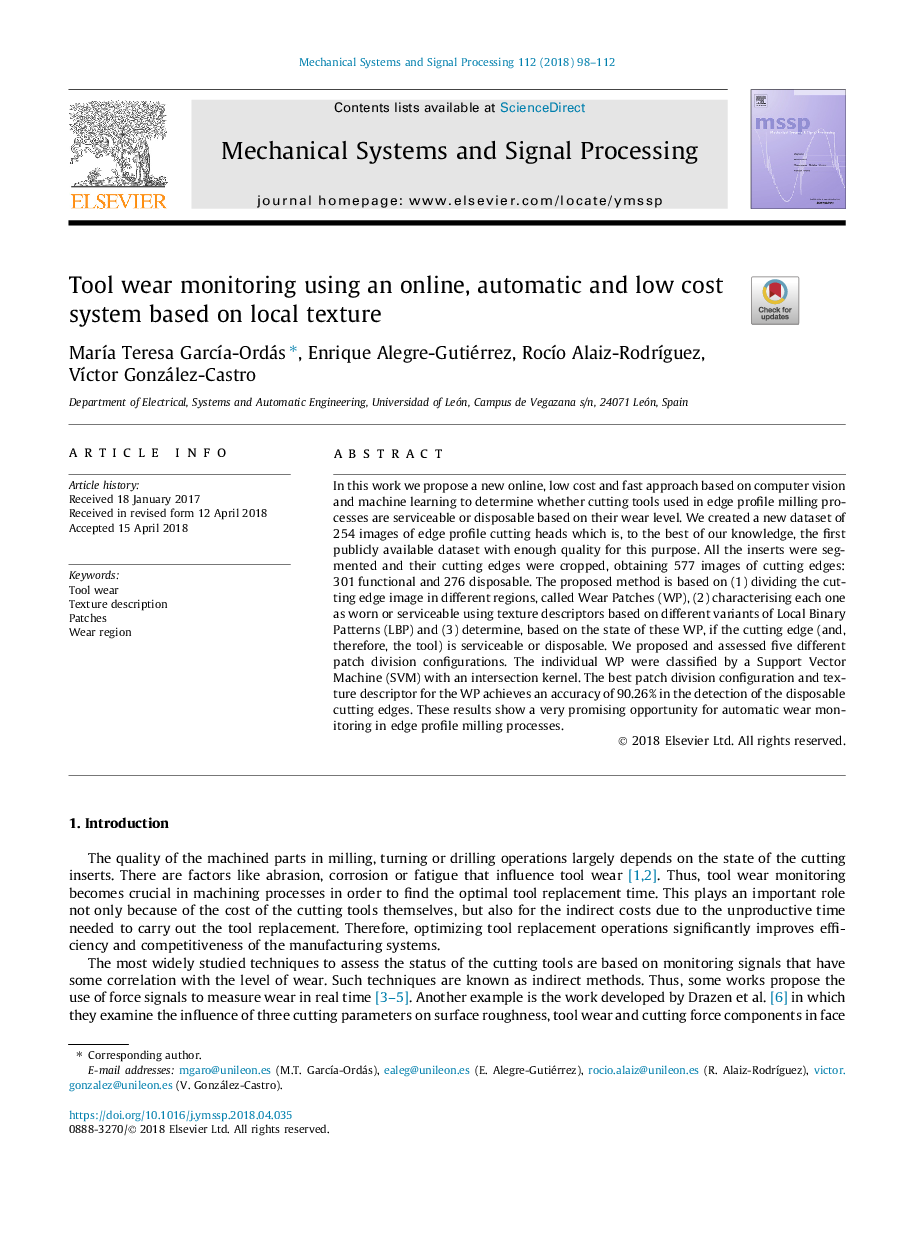| Article ID | Journal | Published Year | Pages | File Type |
|---|---|---|---|---|
| 6953724 | Mechanical Systems and Signal Processing | 2018 | 15 Pages |
Abstract
In this work we propose a new online, low cost and fast approach based on computer vision and machine learning to determine whether cutting tools used in edge profile milling processes are serviceable or disposable based on their wear level. We created a new dataset of 254 images of edge profile cutting heads which is, to the best of our knowledge, the first publicly available dataset with enough quality for this purpose. All the inserts were segmented and their cutting edges were cropped, obtaining 577 images of cutting edges: 301 functional and 276 disposable. The proposed method is based on (1) dividing the cutting edge image in different regions, called Wear Patches (WP), (2) characterising each one as worn or serviceable using texture descriptors based on different variants of Local Binary Patterns (LBP) and (3) determine, based on the state of these WP, if the cutting edge (and, therefore, the tool) is serviceable or disposable. We proposed and assessed five different patch division configurations. The individual WP were classified by a Support Vector Machine (SVM) with an intersection kernel. The best patch division configuration and texture descriptor for the WP achieves an accuracy of 90.26% in the detection of the disposable cutting edges. These results show a very promising opportunity for automatic wear monitoring in edge profile milling processes.
Keywords
Related Topics
Physical Sciences and Engineering
Computer Science
Signal Processing
Authors
MarÃa Teresa GarcÃa-Ordás, Enrique Alegre-Gutiérrez, RocÃo Alaiz-RodrÃguez, VÃctor González-Castro,
